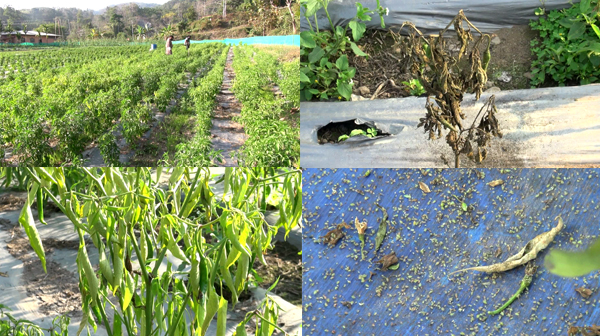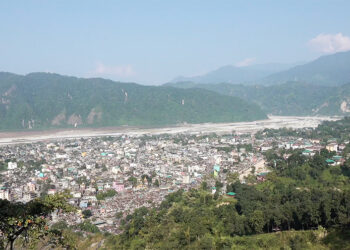 A new disease has started to attack the chilli plants in three gewogs in Sarpang. The disease which is killing the plants slowly after turning it yellowish was reported in Samtenling, Dekiling and Shompangkha Gewogs. And moreover, common pests such as Mites, Aphids and Whitefly are also hindering the growth of the chilli plants.
A new disease has started to attack the chilli plants in three gewogs in Sarpang. The disease which is killing the plants slowly after turning it yellowish was reported in Samtenling, Dekiling and Shompangkha Gewogs. And moreover, common pests such as Mites, Aphids and Whitefly are also hindering the growth of the chilli plants.
Phurba Tamang, a farmer from Kencholing village under Shompangkha Gewog cultivated chillies on 60 decimals of land. Today, half of the chilli plants are infected by the pests. If the plants are not infected, chillies will be ready for harvest.
“During the flowering time, it started wilting. And it was turning into black. So, the agriculture officials provided us with the pesticide,” said Phurba Tamang.
The Shompangkha Gewog Administration received reports from nine households. The Gewog office immediately approached the Agriculture Research and Development Centre (ARDC) at Samtenling for necessary action.
“If we could manage carefully and resolve the issue here only, by one to two weeks there is a possibility of hitting the chillies in the market,” said Ashman Rai, Mangmi of Shompangkha Gewog.
Meantime, officials from ARDC visited around seven different fields in Shompangkha last week. They said that the chilli plants were mostly infected by Aphids, Whiteflies and Mites.
The centre is doing research on management trial to control organically without using chemical fertilizer.
“We are also doing research on how to control aphids, mites and whiteflies organically. Another problem that we observed was Phytophthora. It is because there was rainfall recently and runoff water was accumulated in the fields,” said GS Rai (PhD), Principal Horticulture Officer of ARDC.
He added that “farmers also made the beds in the wrong direction. We have asked them to make proper drainage and control irrigation.”
The centre is also conducting a confirmatory test of the disease.
“We have isolated the pathogen from an infected plant. We are now culturing. We will observe microscopically for morphology, then only we can confirm. We have to culture it for 10 to 15 days for confirmation,” he said.
The centre suspects the disease as Fusarium. It caused by fungi, bacteria and virus. However, the official said the result will be confirmed only after the test.
Karma Wangdi, Sarpang









